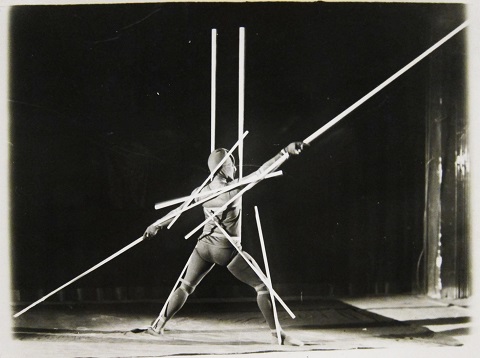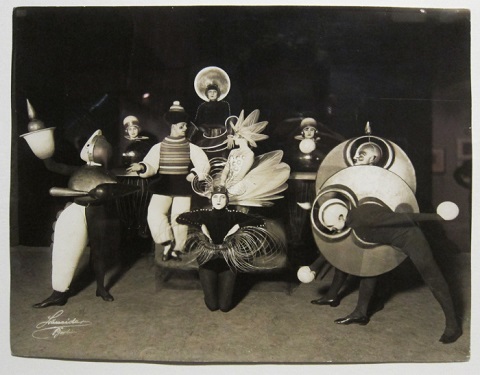Kandinsky, Klee & Other Bauhaus Artists Designed Ingenious Costumes Like You’ve Never Seen Before

Artists of the Bauhaus school—including founder Walter Gropius, Paul Klee, Wassily Kandinsky, Piet Mondrian and others—broke radically with familiar tradition and made minimalist, abstract, and sometimes shocking statements with their work. We know this history, but you probably haven’t seen these cultural figures physically embody their aesthetic principles as they do in the photographs here, from costume parties the Bauhaus school held throughout the twenties.
As Rachel Doyle at Curbed writes, “if you thought Bauhaus folk were good at designing coffee tables, just have a look at their costumes—as bewitching and sculptural as any other student project, but with an amazing flamboyance not oft ascribed to the movement.”

The whimsical costume parties—to which, wrote Hungarian architect Farkas Molnár, artists devoted “the greatest expenditures of energy”—represented further attempts to transcend “medieval conditions” and integrate “today’s scientific and technological advances… into general culture.” So wrote Molnár in a 1925 essay, “Life at the Bauhaus,” where he describes the playfully serious conditions at the school. These parties, he asserts, were superior to “fancy-dress balls” organized by artists in other cities in that “our costumes are truly original. Everyone prepares his or her own. Never a one that has been seen before. Inhuman, or humanoid, but always new.” Everyone participated, it seems, from the newest student to, as Molnár calls them, “the bigwigs”:
Kandinsky prefers to appear decked out as an antenna, Itten as an amorphous monster, Feininger as two right triangles, Moholy-Nagy as a segment transpierced by a cross, Gropius as Le Corbusier, Muche as an apostle of Mazdaznan, Klee as the song of the blue tree. A rather grotesque menagerie…
Might that be Kandinsky in the photograph at the top? Just who is this luminous figure? Why did Gropius dress up as Le Corbusier, and what, exactly, does “the song of the blue tree” look like? We can identify at least one of these artists—the bald man in black at the center of the photograph below is Oskar Schlemmer, painter, sculptor, designer, and choreographer. Schlemmer gave Bauhaus costume design its most formal context with the Triadic Ballet, a production, writes Dangerous Minds, that “combined his work in both sculpture and theater to create the internationally acclaimed extravaganza which toured from 1922 to 1929.”

The ballet’s “18 costumes,” writes Curbed, “were designed by matching geometric forms with analogous parts of the human body: a cylinder for the neck, a circle for the heads…. These elaborate costumes [see photo of performers below]… totally upped the ante at the Bauhaus school’s regular costume balls.” Schlemmer “made no secret of the fact that he considered the stylized, artificial movements of marionettes to be aesthetically superior to the naturalistic movements of real humans.” His ballet, Dangerous Minds remarks, may be “the least ‘human’ dance performance ever conceived.”

It may come as no surprise then that the Triadic Ballet influenced some of the hyper-stylized alien costuming of David Bowie’s Ziggy Stardust tour. Perhaps even more than the photographs of revelers from the costume parties, the Triadic Ballet, which has been periodically revived since its 1922 debut, preserves the fascinating innovations Bauhaus artists envisioned for the human form. Just below, watch a 1970 film production recreating many of the original designs, and see more photographs of Bauhaus costumes at The Charnel-House.
via Curbed
Related Content:
The Homemade Hand Puppets of Bauhaus Artist Paul Klee
Time Travel Back to 1926 and Watch Wassily Kandinsky Create an Abstract Composition
Bauhaus, Modernism & Other Design Movements Explained by New Animated Video Series
Josh Jones is a writer and musician based in Durham, NC. Follow him at @jdmagness
Originally from http://www.openculture.com
